The Moto G (2015) Review
by Brandon Chester on August 19, 2015 8:00 AM EST- Posted in
- Smartphones
- Mobile
GPU Performance
While CPU performance has improved significantly in low-end and mid-range smartphones, the same can't be said of GPU performance. Adreno 306 is really just a variant of Adreno 305, which we have covered time and time again in reviews of Snapdragon 400 devices. I already discussed in my Moto E review that I'm not happy with the graphics performance in Snapdragon 410 and with the GPU configuration in the Moto G being exactly the same there won't be any significant changes to graphics performance.
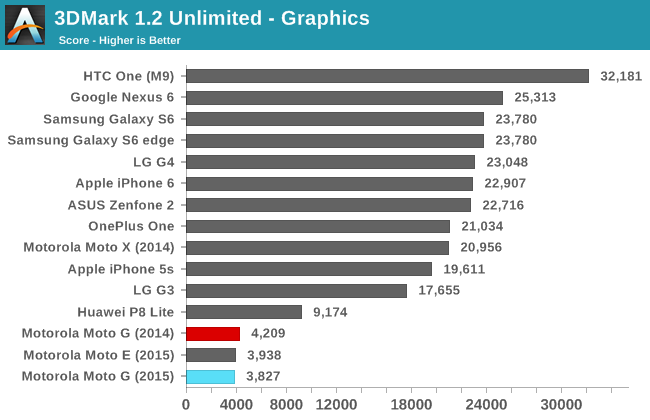
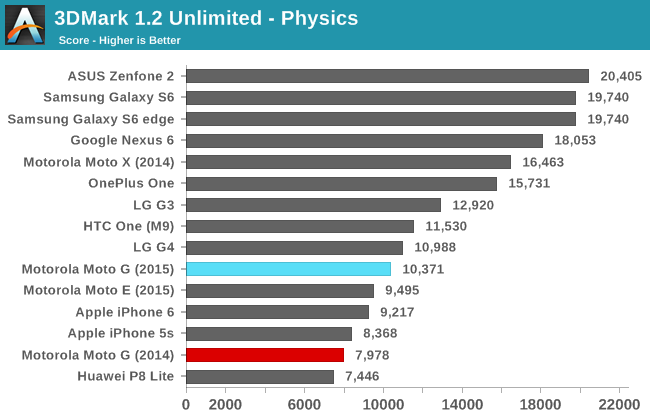
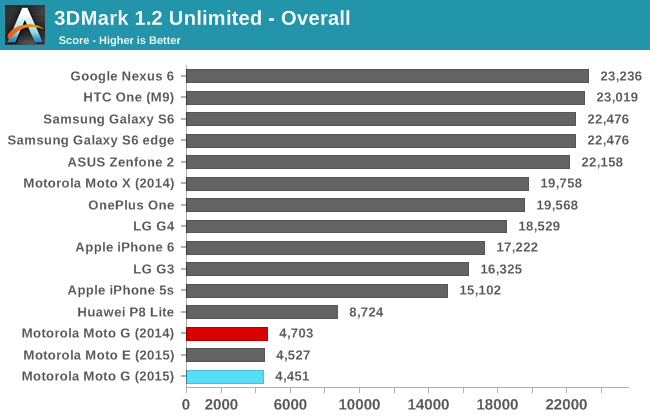
Due to the way 3DMark calculates its overall score, it's not possible for a device to pull ahead based on the score of one test being substantially higher than the other. Because of this, the Moto G's improvement in the physics test doesn't lead to it coming on top overall due to its slightly lower graphics score. I would just attribute the lower graphics test score to testing variance, and so in reality the Moto G will be slightly faster than the Moto E or older Moto G in any physics heavy games.
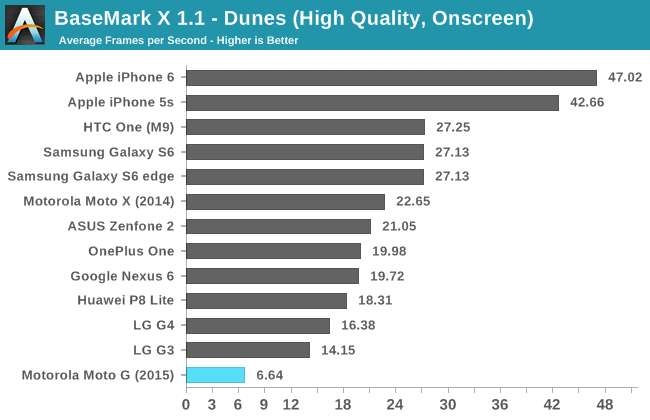
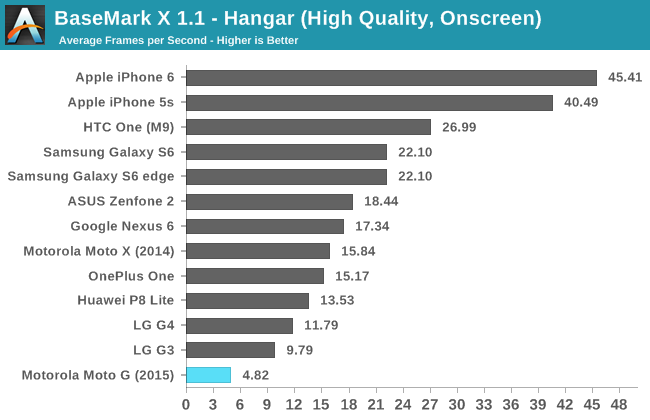
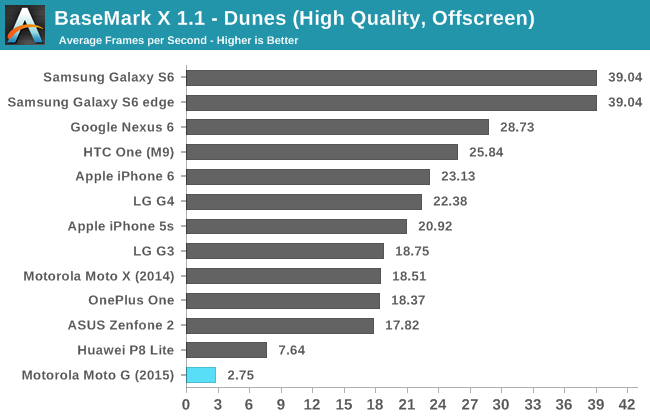
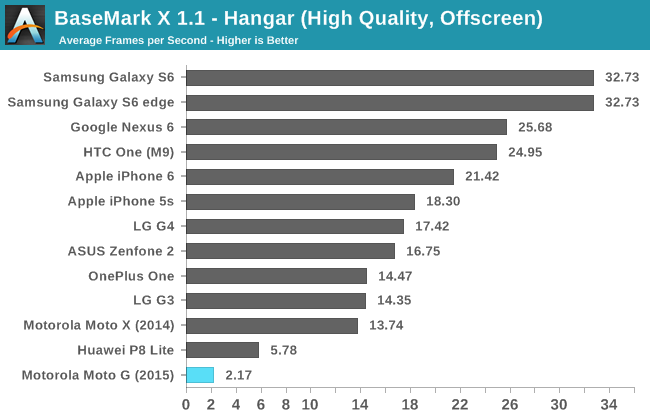

Driver bugs had previously prevented me from running BaseMark X on Snapdragon 410 devices. This appears to have been resolved, as the test runs and completes on the Moto G. There's not much to be said about the scores, which are at the bottom of the charts in every single test.
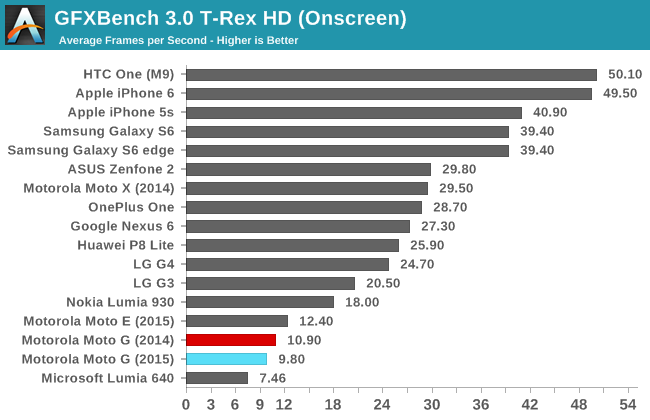
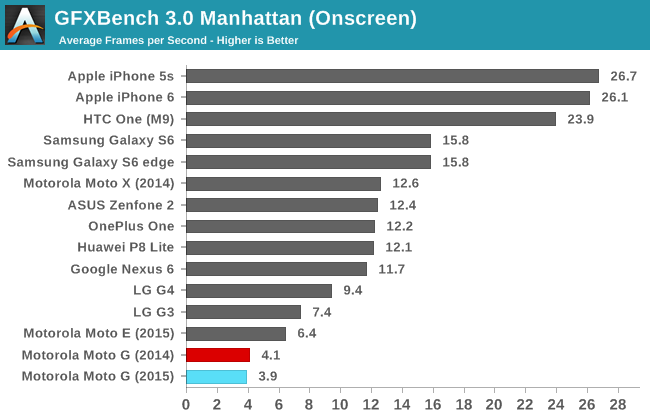
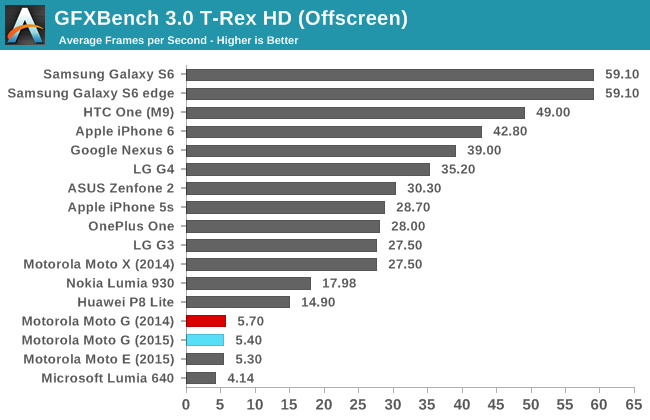
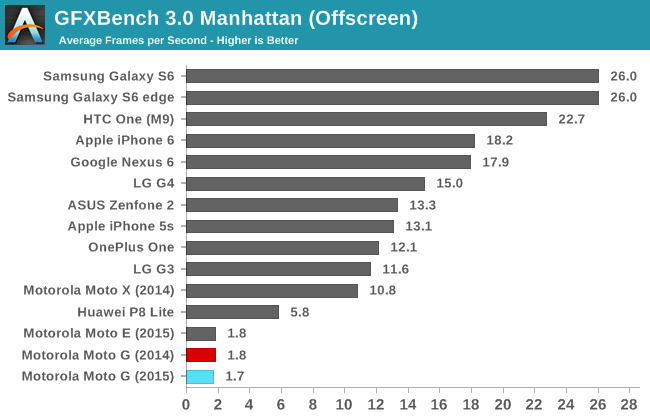
As expected, performance in GFXBench on the new Moto G is essentially identical to that of other Adreno 305/306 devices. Unfortunately they all share a space at the very bottom of each chart, and end up being between 1/3 and 1/2 the speed of the Adreno 405 GPU in Snapdragon 615.
When I reviewed the Moto E I gave the GPU performance a pass because the phone sold for $100-130. With the Moto G priced as high as $219 for the high end model, I have to say that $30 more gets you the Huawei P8 Lite which uses Snapdragon 615 and Adreno 405 which is substantially faster. There's not much Motorola could do about this apart from using a completely different SoC, but obviously that wasn't a possibility when building a device that does start at $179 even if it scales up to $219. I just hope that we see some improvement in GPU performance on devices at this price point in the near future.
NAND Performance
Flash memory performance can often be an invisible performance bottleneck when applications are running in the background, writing files, or performing updates. Low-end and mid-range devices often suffer from very poor NAND performance which can cause stuttering or slowness whenever there's heavy I/O activity occurring.
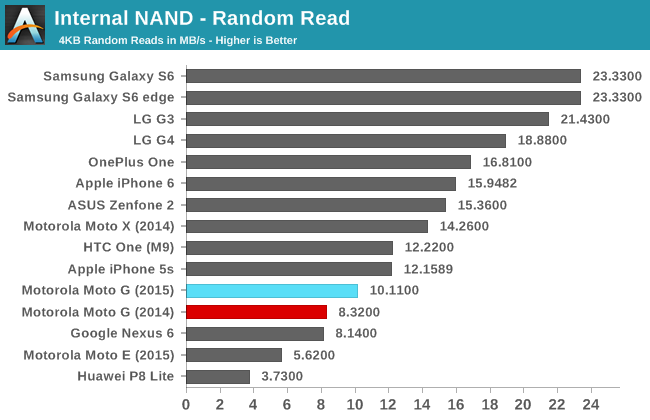

Random read speeds on the Moto G are much faster than the Moto E or the Huawei P8 Lite. They're certainly not the fastest on record, but they're at the point where I wouldn't worry about them causing performance problems in most circumstances. The random write speed is a very curious case, with it being faster than every other device on record. There doesn't appear to be any problem with the testing, and it seems that the Moto G's NAND simply has relatively fast random write speeds.
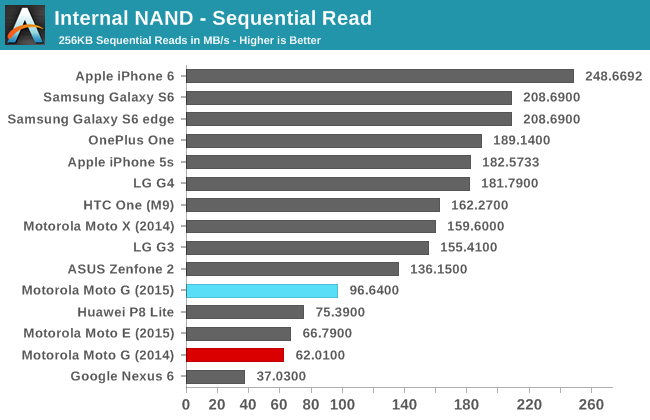
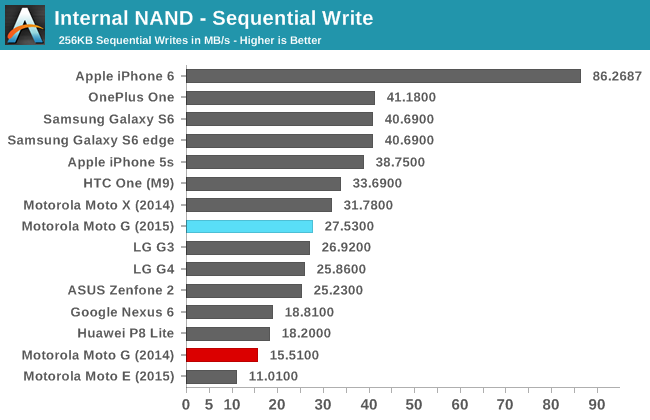
Sequential read speeds on the Moto G are faster than other mid range phones, but not as fast as the Zenfone 2 or flagship Android devices. Sequential writes sit right in the middle of the chart and are around the same speed as the NAND in LG's flagship devices. Whether it's random or sequential access I don't expect users will encounter any performance issues on the Moto G caused by poor NAND performance.










90 Comments
View All Comments
christofftofferson - Wednesday, August 19, 2015 - link
How come the Nexus 6 doesn't use OIS for video?Technical limitation?
Brandon Chester - Wednesday, August 19, 2015 - link
Using OIS for video introduces its own visual problems with the OIS having to reset once it reaches its maximum angle of accommodation. It's arguably worse looking than just using EIS because it happens so quickly that it almost looks like a stutter, and is quite jarring.christofftofferson - Thursday, August 20, 2015 - link
Ah. I see.Thanks for the response and great review
bug77 - Wednesday, August 19, 2015 - link
Just as a note, Motorola has decided to go with the 32bit version of Android for this iteration of Moto G. Rumour has it this is because they wanted to be more memory efficient on the 1GB model, but that's just speculation.hans_ober - Wednesday, August 19, 2015 - link
It's probably that. They needed to take care of the 1GB model; and didn't want to develop a separate software stack for the 2GB 64bit.tipoo - Wednesday, August 19, 2015 - link
Yeah that's likely the reason, the old G is pretty bad with 1GB on 32 bit as it is, 64 bit would likely make it significantly worse.Not creating a 64 bit build for the 2GB is probably just laziness though.
hans_ober - Wednesday, August 19, 2015 - link
How is the audio output? Cross-talk, can it drive headphones? Camera speed?kspirit - Wednesday, August 19, 2015 - link
The important questions!Shadowmaster625 - Wednesday, August 19, 2015 - link
These phones are pointless. The market is already saturated with hardware that is better than this. You can buy a LG G2 for just over $100 and it blows away this joke in every conceivable category.T1beriu - Wednesday, August 19, 2015 - link
Sorry, but your comment is pointless unless you point us towards that "just over $100 G2" that you're talking about.